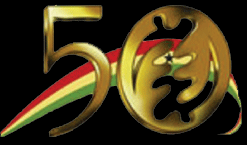
At the time of Ghana’s independence, the banking industry was controlled by two foreign banks — the Standard Chartered Bank, which was known at that time as the Bank of British West Africa (BBWA), and Barclays Bank, then known as Barclays DCO (Barclays Dominion, Colonial and Overseas Bank).
These two banks were overseas branches of big international banks incorporated in Britain and they handled all the commercial banking business in the country until 1953 when the state-owned bank of the Gold Coast, the parent bank of both the Bank of Ghana and the Commercial Bank opened its doors for business.
When the country attained independence in March 1957, it was decided by Parliament that the Bank of the Gold Coast be split into two — The Bank of Ghana and the Ghana Commercial Bank.
The two foreign banks and the GCB, which then constituted the primary commercial banks, dominated the commercial banking system, handling a large percentage of the overall banking business in Ghana.
The main objective of GCB at that time was to provide special attention to Ghanaian traders, businessmen and women and especially farmers who could not obtain support and services from the two expatriate banks.
At the time of the establishment of GCB, some were of the view that it would not be able to survive the competition of the two foreign banks and that the maximum lifespan of GCB would not be more than two years.
Today, the bank has established itself in all the 10 regions, having 133 branches throughout the country.
The first three Managing Directors were expatriates — Mr A. Eggleston, 1953 to 1957, Mr Harry Duff, 1957 to 1959, and Mr H. P. Hinchclife, 1959 - 1960.
The first Ghanaian to head GCB was Mr T. O. Asare Jnr, from 1960 to 1966.
The bank was set up with no premises, no staff and no board, not even the first rough outline of the legislation that would eventually set up the bank.
The only suitable building available at that time was a wooden structure on the 28th February Road. This had to be converted to allow for the incorporation of a strong room and the general layout of a bank office.
In leaps and bounds, the Ghanaian bank grew and was allowed to play a greater role in financing the country’s internal and external trade.
For instance, whereas in April 1957, the bank’s total advances were approximately ¢1,350,000, it increased to over ¢8,000,000 by July 1960.
Whereas up to 1960, GCB did some 20 per cent of the known banking business, today, it can be said that the bank commands over 60 per cent of the country’s volume of business.
When GCB celebrated its 10th anniversary, there were 47 branch offices throughout the country. By the 20th anniversary the bank had 97 branches and 14 agencies to its credit.
An important landmark in the history of GCB was the opening of the foreign branch in the United Kingdom. This was in 1959 when the country’s foreign trade began to take a marked turn towards a great rationalisation of foreign exchange resources.
The London office of GCB progressed tremendously. Apart from acting as bankers for the government of Ghana in London, its role as a clearing house for the country’s foreign external payment increased over the years.
Another milestone of GCB was the formation of a subsidiary bank in Lome, Bonque Commerciale du Ghana, in 1970.
The opening of the branch dates from what was known as the Aflao Conference, which was convened in 1963 to examine the normalisation of trade between Togo and Ghana.
GCB, since its inception, has identified itself with national development. The bank, which is wholly owned by the government, was privatised in 1996 when part of the government’s shares was divested under the economic recovery programme.
Today, government ownership stands at 34.31 per cent while institutional and individual holding add up to 65.69 per cent.
The London branch was made autonomous and named Ghana International Bank. The Lome branch was closed down due to operational reasons.
Notwithstanding the problems of the bank, it has made a great impact on the national economy in areas such as cocoa purchases and syndication of international loans, financing of crude oil and supporting large industries, especially, the private sector.
It has also been providing needed services and other financial support in some of the remotest parts of the country where other banks do not operate.






No comments:
Post a Comment